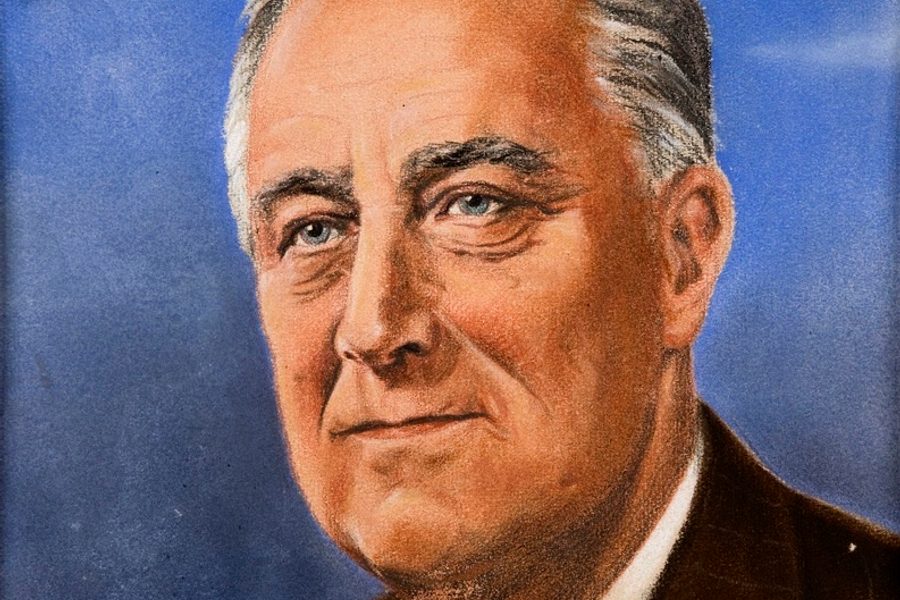
A Department of Justice initiative that could see thousands of federal prisoners’ sentences commuted, has brought a rarely used presidential power into the spotlight. Last week, the government began notifying prisoners in federal correctional facilities about changes to clemency guidelines. Presidents have powers to issue pardons under Article II, Section 2, clause 1 of the Constitution (the Pardon Clause)
..and he shall have Power to grant Reprieves and Pardons for Offenses against the United States, except in Cases of Impeachment.
This power was much more widely used by presidents in the past, as shown by this graph, based on data from the Office of the Pardon Attorney. The longest serving president, Franklin D Roosevelt, used the power most often, pardoning, commuting, or otherwise reducing more than three thousand sentences, in his twelve years in office.
…reduces a sentence, either totally or partially, that is then being served, but it does not change the fact of conviction, imply innocence, or remove civil disabilities that apply to the convicted person as a result of the criminal conviction.
Earlier this month, The Prison Complex spoke to Mark Osler, Professor of Law at the University of St Thomas in Minnesota. According to Professor Osler, “a really ambitious clemency project would release 5,000 prisoners.” As the graph shows, if that happened it would mark a significant increase in the use of these executive powers generally, and commutations in particular. The last president to commute more than 1,000 sentences was Woodrow Wilson.
It would also mark an important shift for the Obama administration. No other two-term president had granted fewer pardons, commutations or respites after five years in office than President Obama. By the end of 2013, his office had used this executive power just 40 times. By comparison President Bush had done so 60 times at the same point in his administration. The second lowest use of executive clemency at the five-year mark of an administration was by President Clinton, who had only granted clemency 56 times by the end of 1997.
In fact, Clinton’s time in office would have been a record low for a two-term president, were it not for a massive increase in pardons and commutations in his last months in office. As one former Pardon Attorney told the Senate Judiciary Committee in 2001
It was said that President Clinton did not want to leave office having pardoned less generously than any President in history, and only three weeks before leaving office he himself remarked publicly on his frustration with the existing system of Justice Department review.
Professor Osler told The Prison Complex that he believed there were two reasons for the Obama administration’s clemency initiative. Firstly, that President Obama is a former constitutional lawyer, and secondly the degree of consensus amongst politicians from both main parties about what he called “federal over-extension of criminal law” (the new clemency guidelines will only affect people in the federal justice system, although states have similar powers to reduce or pardon crimes).
Not shown in this graph is the huge increase in petitions for executive clemency over the last few presidents. The Clinton administration received almost twice as many petitions for clemency as Reagan’s did, and the Obama administration looks set to receive double that number again.
The data used for this graph, came from the Department of Justice (a study by Rock Valley College professor P.S Ruckman calculated the number of executive clemencies granted differently). On the data, the Office of the Pardon Attorney’s website states:
The statistics for petitions granted are taken from a count of clemency warrants maintained by the Office of the Pardon Attorney. Cases in which multiple forms of relief were granted are counted in only one category. Cases in which clemency was granted to a person who did not file an application with the Office of the Pardon Attorney are counted as “Petitions Granted” but have not been counted as “Petitions Pending” or “Petitions Received” since at least FY 1990. The figures for commutations exclude one reprieve granted in FY 2000 and one granted in FY 2001. Also excluded from this chart are individual members of a class of persons granted pardons by proclamation, such as President Carter’s proclamation granting clemency to certain Vietnam era offenders, and persons granted clemency after action by President Ford’s Presidential Clemency Board. “Fiscal year” was originally defined as July 1 to June 30, but in 1976 became October 1 to September 30. “Petitions Pending” means pending at the beginning of the fiscal year or, in the case of a change of administration, the number of cases pending at the time of the new President’s inauguration; that number may not correspond with the number computed from case-processing figures reported for the previous year due to the fact that minor subsequent corrections in case closure for a previous fiscal year(s) have been made.



